The 1970s were a glorious era for kid-focused food marketing—a time before nutritional labels received serious scrutiny and when artificial colors were celebrated rather than avoided. Parents who grew up enjoying these technicolor treats now face a dramatically different food landscape where organic, whole-grain, and low-sugar options dominate children’s snacking options. Looking back at what constituted perfectly acceptable everyday snacks in the ’70s reveals just how dramatically our understanding of nutrition and food additives has evolved over a single generation. Today’s helicopter parents might need to sit down before reviewing these once-beloved staples that fueled playground adventures and after-school snack attacks.
1. Space Food Sticks

Developed as actual astronaut nutrition then repackaged for children, these fingers of compressed mystery ingredients promised to make kids feel like Neil Armstrong with every bite. The chewy, chocolate-flavored cylinders came individually wrapped in foil and were marketed with space-age promises despite containing a decidedly earth-bound combination of corn syrup, sugar, and hydrogenated oils. Parents in the ’70s enthusiastically purchased these cosmic snacks, believing the association with NASA’s scientific achievements somehow made them nutritionally advanced. VICE explores the rollercoaster in popularity and obscurity that this nostalgic treat underwent over the years.
The caramel and peanut butter varieties proved particularly popular among children who were more interested in pretending they were floating in zero gravity than questioning what “textured vegetable protein” actually was. Today’s parents, scrutinizing ingredient lists for recognizable components and minimal processing, would be horrified by the chemical preservation methods and the 7-10 grams of fat packed into each stick. The product’s eventual discontinuation in the early ’80s (before a brief revival and second discontinuation) speaks to changing consumer priorities that would make such a highly processed, nutritionally questionable product unmarketable to contemporary parents.
2. Pop Rocks
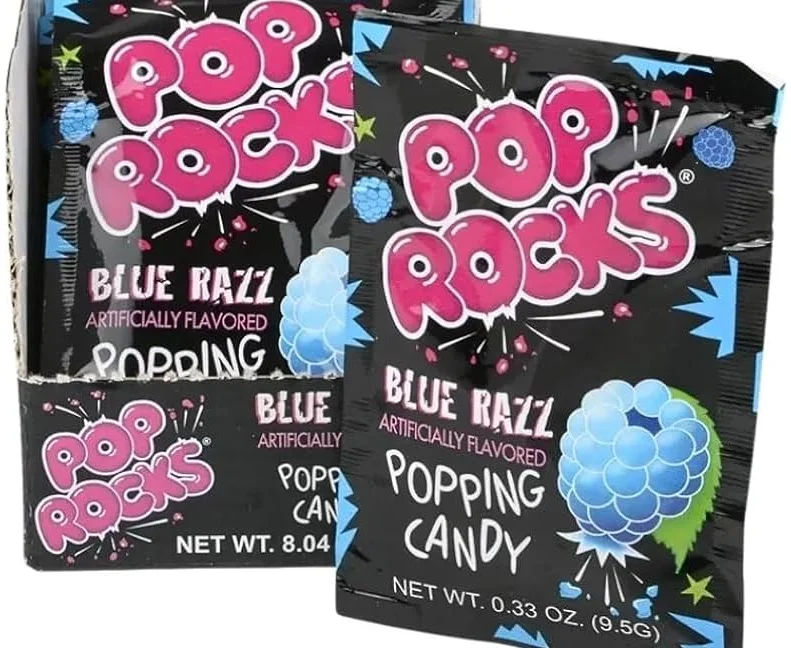
The explosive candy that sparked playground rumors about exploding stomachs created a physical sensation unlike anything else in the candy aisle when it debuted widely in 1976. The basic concept—carbonated sugar crystals that released tiny bursts of carbon dioxide when they dissolved in your mouth—was novel enough to create genuine concern among parents who wondered if the popping sensation could cause internal damage. General Foods even had to send the inventor on a promotional tour to reassure parents that the candy wouldn’t cause children’s stomachs to explode when combined with soda—a persistent urban legend that dogged the product for years. History Oasis offers some insight into the surprising and remarkably obscure history behind these popping treats.
The candy’s intense artificial colors (particularly the bright blue version) and its primary ingredient list of sugar, lactose, and corn syrup would raise immediate red flags for today’s natural-minded parents. Modern caregivers, already concerned about hyperactivity and sugar consumption, would likely view the combination of maximum sugar content and the gimmick of physical sensation as a particularly problematic combination. While Pop Rocks continue to exist today, they’ve transitioned from regular treat to occasional novelty, reflecting contemporary parents’ reluctance to provide pure-sugar experiences as routine snacks.
3. Jell-O 1-2-3
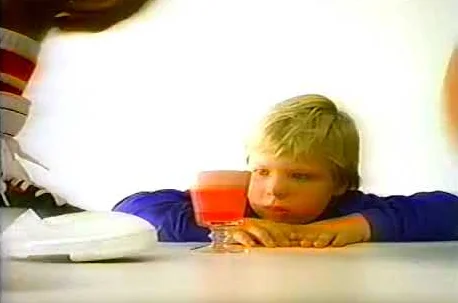
This three-layered dessert mix created distinct strata of traditional Jell-O, mousse-like cream, and a fluffy top layer all from one package—a food science marvel that delighted children of the ’70s. The preparation process fascinated kids who watched as the simple powder, when mixed with water and whipped, magically separated into three distinct textures and densities during refrigeration. Parents appreciated the easy preparation and the seemingly elegant result that could be served in clear glassware to make ordinary weeknight dinners feel special. Food52 puts into perspective how revolutionary this setup was at the time.
The product’s popularity stemmed largely from artificial food science rather than culinary tradition, containing modified food starch, adipic acid, disodium phosphate, and artificial flavors that created the density-shifting effect. Today’s parents, increasingly skeptical of food additives and artificial ingredients, would likely be troubled by both the chemical complexity and the realization that this “dessert” offered essentially zero nutritional value beyond empty calories. The product’s discontinuation in 1996 after a 27-year run coincided with growing consumer demand for more natural food options—a movement that has only intensified in the decades since.
4. Kool-Aid Packets with Added Sugar
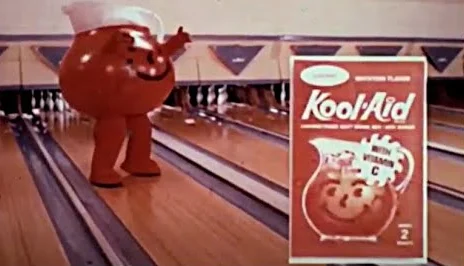
The smiling pitcher mascot convinced ’70s children that true refreshment came in the form of artificially flavored powder mixed with cups of sugar and water. The standard preparation instructions on each packet explicitly directed parents to add a full cup of sugar to create the beverage children expected—an amount containing approximately 200 grams of sugar per pitcher. Parents routinely served this concoction as an everyday beverage option, often unaware that each glass contained more sugar than today’s entire recommended daily allowance for children.
The vibrant colors that left telltale rings around children’s mouths came from artificial dyes that have since become controversial, with some (like Red No. 2) eventually banned after health concerns emerged. Today’s parents, who often agonize over even small amounts of juice consumption, would be aghast at the casual way ’70s families kept perpetually full pitchers of what essentially amounted to liquid candy available for all-day consumption. While Kool-Aid still exists, contemporary marketing shows pre-sweetened versions with “50% less sugar than leading sodas”—a far cry from the original approach that made sugar the main ingredient after water.
5. Bugles
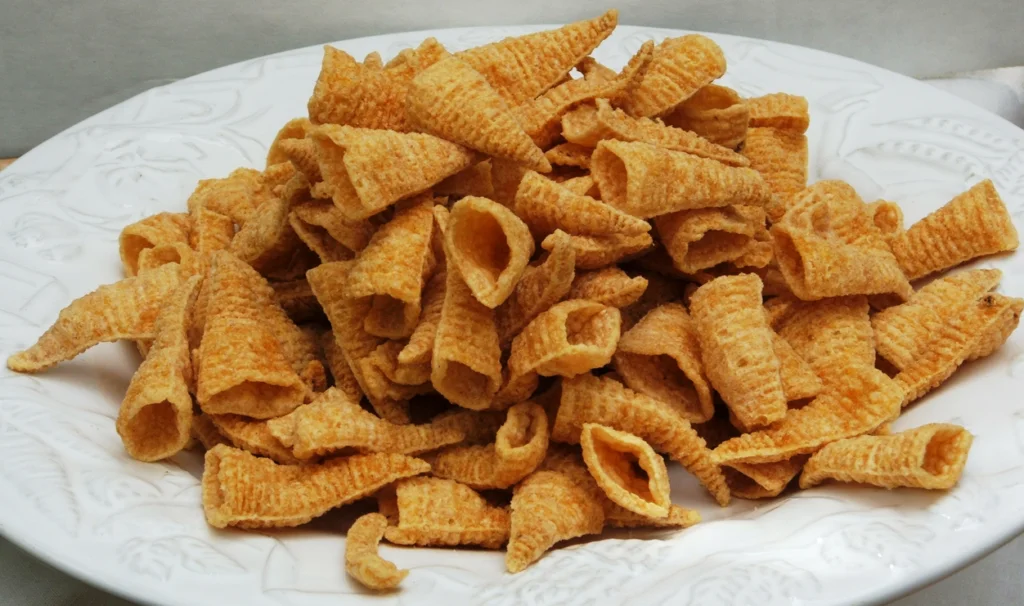
These cone-shaped corn snacks achieved iconic status partly because they could be placed on fingertips to create “witch hands” before being consumed—an interactive eating experience particularly appealing to ’70s kids. The original Bugles contained a substantial amount of coconut oil, giving them a distinctive flavor profile that modern versions (now made with less expensive oils) don’t quite match. Children of the era consumed them by the handful without any parental concerns about the 9 grams of fat and 180 milligrams of sodium packed into each small serving.
The snack’s durability came from its highly processed nature—the corn meal underwent extrusion cooking under high heat and pressure to create the signature shape and crunchy texture designed to last for months on store shelves. Modern parents who scrutinize labels for artificial preservatives and trans fats would likely be troubled by the original formulation’s nutritional profile and highly processed production methods. While Bugles have survived into the modern snacking landscape (with modified recipes), they represent a category of shelf-stable, nutrient-poor snacks that dominated ’70s pantries but would raise eyebrows in today’s school lunchrooms.
6. Hostess Ding Dongs
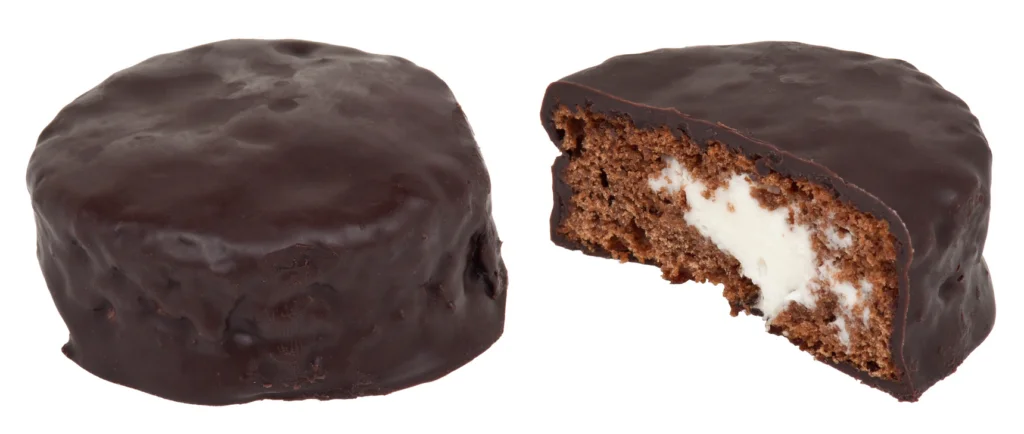
These chocolate-covered, cream-filled hockey pucks of cake represented the pinnacle of processed dessert engineering, with a remarkable shelf life that defied natural food decay processes. Originally wrapped in distinctive aluminum foil that kids loved to smooth out and fold into tiny art projects, each cake contained nearly five teaspoons of sugar and a substantial dose of partially hydrogenated oils. Parents routinely included these as lunchbox desserts, considering them appropriate single-serving treats despite their providing almost a quarter of a child’s recommended daily caloric intake.
The snack cakes’ chocolate coating didn’t actually contain much chocolate, instead using “chocolate-flavored coating” with numerous stabilizers and emulsifiers to maintain its solid state in varying temperatures. Today’s allergy-conscious parents would be particularly troubled by the original recipe’s cavalier approach to potential allergens and cross-contamination—concerns that simply didn’t register in ’70s manufacturing processes. While Ding Dongs still exist, many contemporary parents would view them as an occasional indulgence rather than an appropriate everyday snack, representing the dramatic shift in attitudes toward processed foods and childhood nutrition.
7. Tang
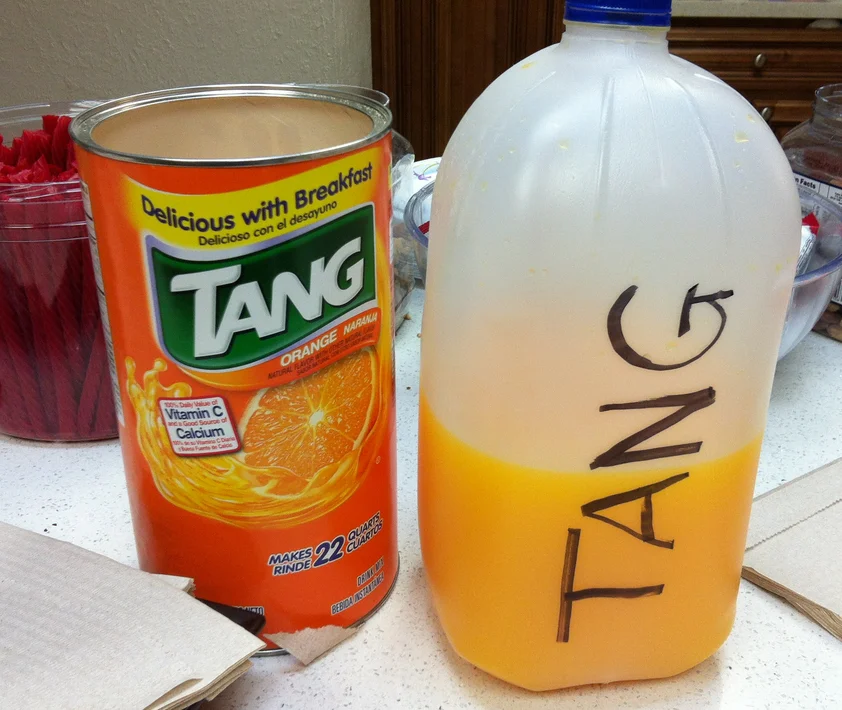
This “astronaut approved” orange drink powder convinced a generation of parents they were providing something vaguely nutritious because it was fortified with vitamin C and calcium. The aggressive marketing campaign featuring space program endorsements lent Tang a health halo that distracted from its primary ingredients: sugar and artificial flavoring. Parents mixed this neon orange powder into water as a breakfast beverage, genuinely believing it offered a reasonable alternative to actual orange juice while providing necessary nutrition for growing children.
The original formulation’s artificial colors and flavors created a taste experience entirely divorced from actual oranges—a synthetic flavor profile so distinctive that many ’70s children were surprised by the comparative blandness of real orange juice when they eventually tried it. Today’s parents, who often research the sugar content and processing methods of conventional orange juice before serving it, would be stunned by the casual acceptance of a completely artificial alternative as a dietary staple. While Tang maintains popularity in some international markets, its role in American households has diminished significantly as contemporary parents prioritize less processed options.
8. Spaghetti-Os
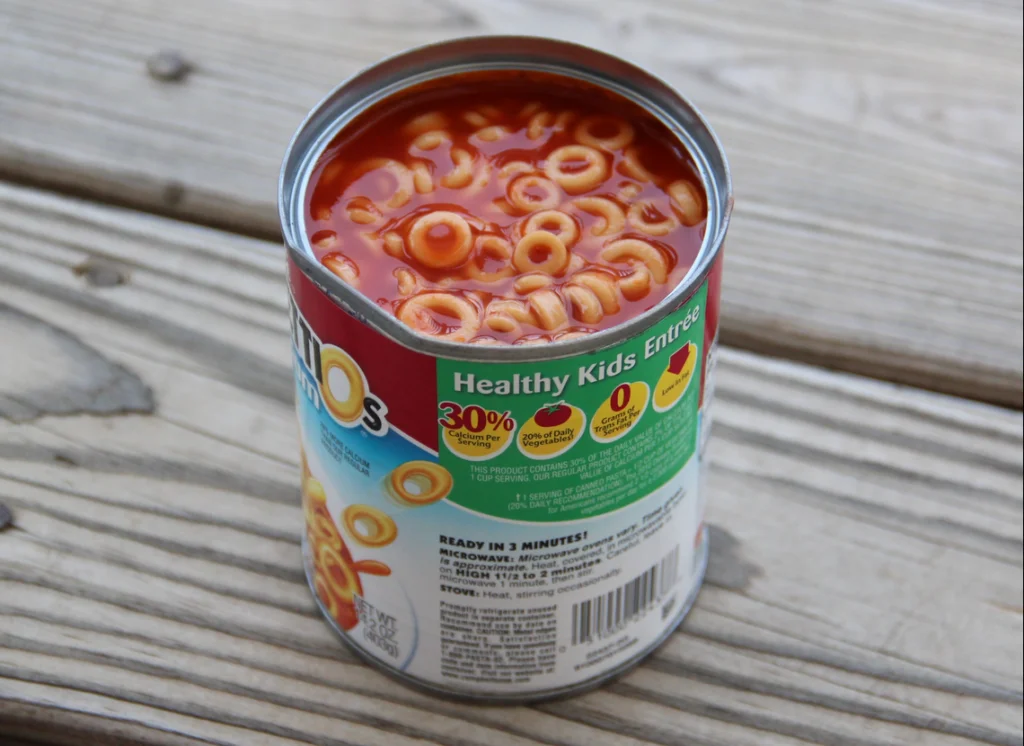
These rings of soft pasta floating in sweet tomato sauce provided a generation of latchkey kids with a meal they could heat themselves when parents weren’t home to prepare dinner. The original formula contained significant amounts of sugar (11 grams per serving)—creating a distinctively sweet flavor profile that bore little resemblance to traditional pasta dishes but appealed enormously to children’s palates. The “complete meal in a can” marketing appealed to busy parents looking for quick, shelf-stable options their children would willingly eat without supervision or complaint.
The product’s mascot—a smiling, anthropomorphic O—appeared in commercials with the memorable jingle “Uh-oh, Spaghetti-Os,” making the product instantly recognizable to children who then pestered parents for this specific brand. Today’s parents, increasingly concerned about BPA in can linings and the high sodium content (originally about 700mg per serving) of processed foods, would likely question the presentation of such a nutritionally limited product as a complete meal. While Spaghetti-Os still exist, contemporary marketing has shifted to emphasize the inclusion of vegetables and protein rather than the convenience and child-friendly flavor that dominated ’70s advertising.
9. Jiffy Pop
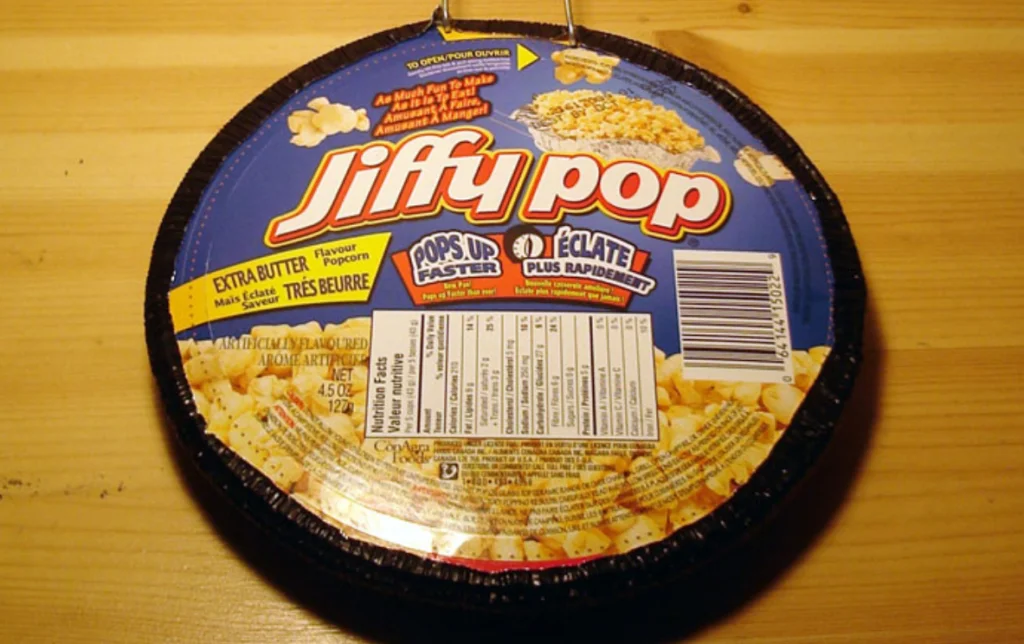
Back in the day, Jiffy Pop wasn’t just a snack—it was an event. You’d tear off the cardboard top, set it on the burner, and start shaking like your life depended on it. Watching that silver dome slowly puff up was pure theater, especially for kids who thought they were witnessing kitchen magic. The hiss and pop of the kernels, the rising foil, and the anticipation of buttery goodness—it was popcorn with a side of suspense.
But looking at it through today’s lens, it’s hard to imagine a product like that flying off shelves without a dozen warning labels. Giving a child the job of shaking a hot, oil-filled aluminum pan over an open flame would probably make a modern safety inspector lose sleep. Not to mention the ingredients list, which was full of things like artificial butter flavor and partially hydrogenated oils. Still, for all its hazards, Jiffy Pop gave us a little thrill and a sense of independence—two things that, for better or worse, don’t come sealed in foil much anymore.
10. Fun Dip
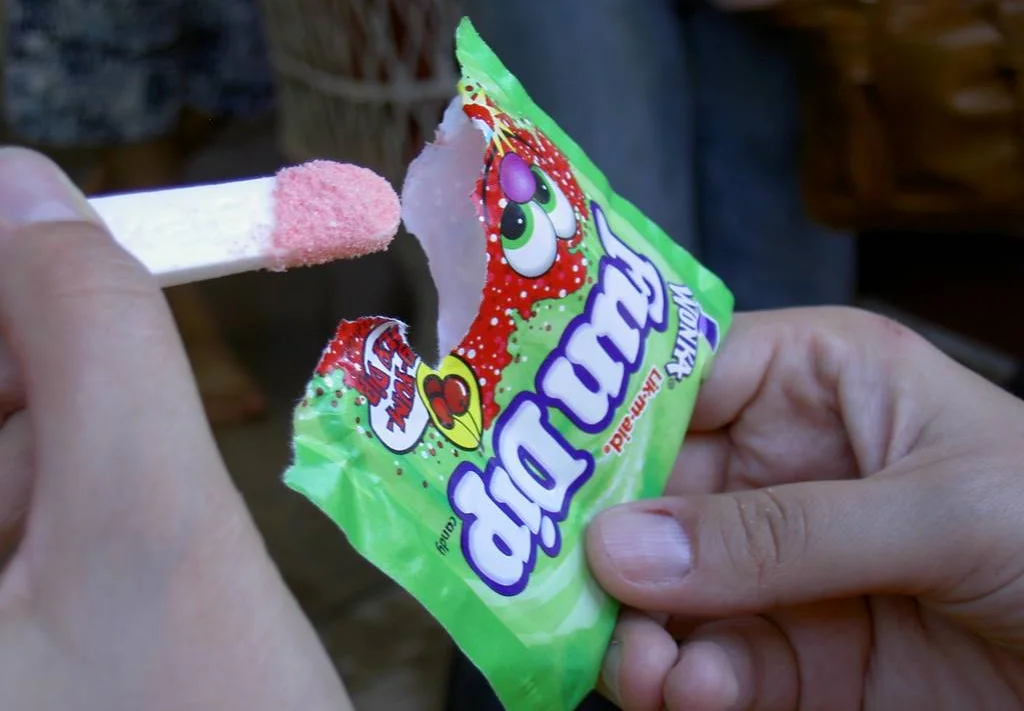
This interactive candy experience involved dipping a candy stick (called a “Lik-A-Stix”) into flavored sugar pouches—essentially allowing children to directly consume pure colored sugar with minimal barriers. The product, originally called “Lik-M-Aid,” was literally powdered dextrose with artificial flavors and colors, making it one of the most nutritionally vacant products marketed specifically to children. Parents purchased this highly wasteful candy seemingly unconcerned that it contained nothing but sugar, artificial colors, and the strange sensory experience of licking a candy stick.
The physical experience—dipping, licking, and inevitably spilling colored sugar everywhere—created a memorable and interactive candy moment that children loved despite (or because of) its inherent messiness. Today’s parents, already concerned about conventional candy’s sugar content, would likely be horrified by a product specifically designed to maximize sugar consumption while adding controversial food dyes like Red 40 and Yellow 5 to the experience. While Fun Dip remains available, it has transitioned from everyday treat to occasional novelty—a shift reflective of modern parental concerns about both nutrition and artificial ingredients.
11. Froot Loops with Artificial Colors
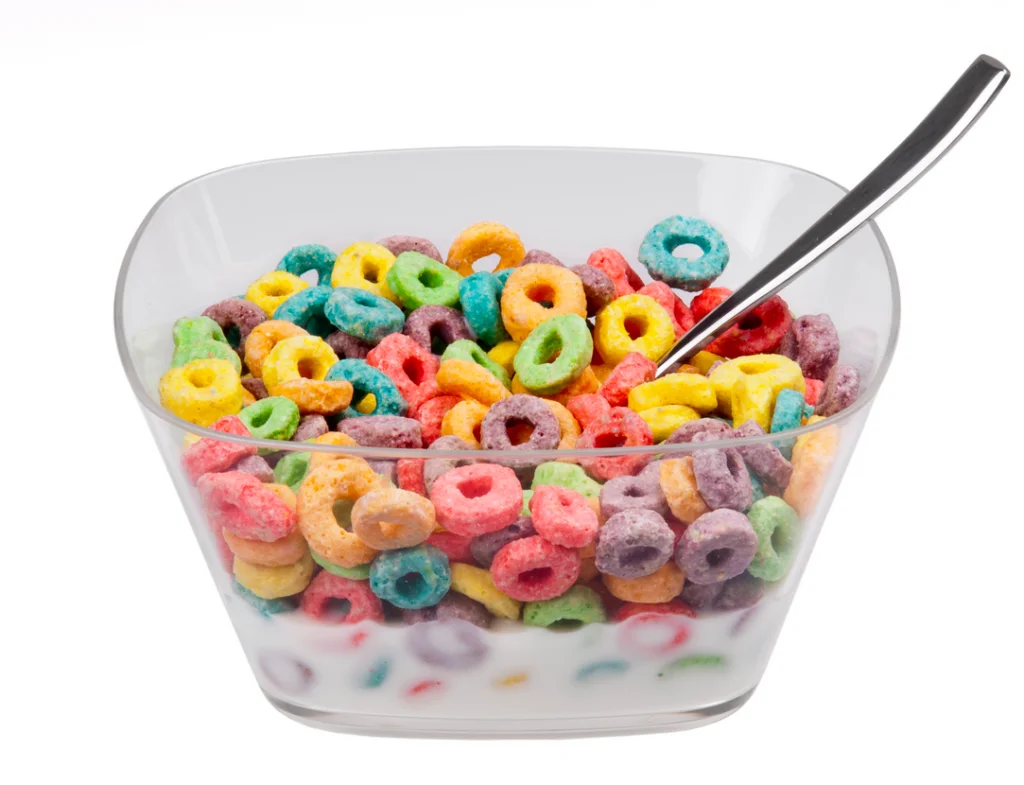
The neon-hued breakfast cereal convinced ’70s parents they were making a reasonable breakfast choice because it was “part of a complete breakfast” according to commercials (which always showed the cereal alongside whole wheat toast, orange juice, and milk). Each artificially-colored loop contained substantial sugar—originally about 13 grams per serving, though actual child portions often exceeded the stated serving size. The vivid colors came from a combination of artificial dyes including Yellow 6, Red 40, and Blue 1, creating a visually appealing breakfast experience that bore no resemblance to any natural food.
The cereal’s ability to turn milk into pastel-colored sugar water was considered a feature rather than a concern, with many children drinking the sweetened milk as the best part of the breakfast experience. Today’s parents, who often research even “natural” cereals for hidden sugars and artificial ingredients, would be stunned by the cavalier marketing of what essentially amounted to cookies in milk as a wholesome way to start the day. While Froot Loops still exists, Kellogg’s has responded to changing parental expectations by reducing sugar content and replacing some artificial colors with natural alternatives—though the product remains far from what most nutrition-conscious contemporary parents would consider an everyday breakfast option.
12. Franken Berry & Count Chocula
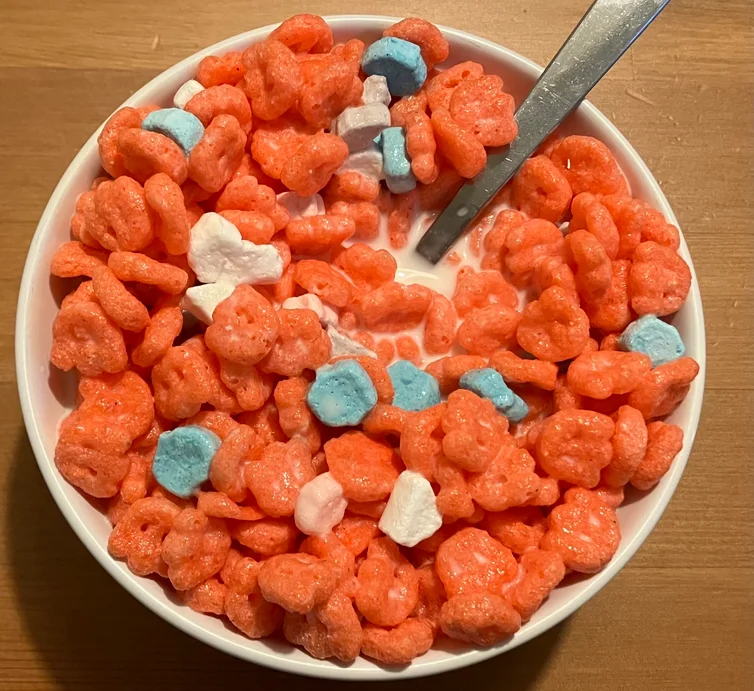
For kids growing up in the ’70s and ’80s, breakfast didn’t get much better than a bowl of Franken Berry or Count Chocula. These monster-themed cereals were pure sugary joy, packed with marshmallow bits and enough artificial color to turn your milk pink or brown. The commercials made the characters feel like cartoon friends, and opening a new box felt like a holiday morning—especially if there was a prize buried inside.
But if you handed one of those boxes to a modern parent, you’d probably get a look of horror. Between the sky-high sugar content, neon dyes, and chemical-sounding ingredients, these cereals are practically the poster children for what nutrition labels now warn against. Parents today might flinch at the idea of feeding their kids what’s essentially dessert at 7 a.m., but back then, it was just part of a “balanced breakfast” (as long as you believed the commercials). Still, the nostalgia lingers—for the taste, the characters, and the feeling that breakfast could be just a little spooky and a lot of fun.
Looking back at these ’70s snacking staples reveals more than just changing nutritional standards—it highlights an entire cultural shift in how we view childhood, parental responsibility, and the role of processed foods in daily life. Today’s organic fruit leather and whole-grain crackers represent not just different ingredients but different values about what childhood consumption should entail. While many adults fondly remember the artificially vibrant flavors and colors of their ’70s childhood treats, most would hesitate to provide the same experiences to their own children—a testament to how thoroughly our understanding of nutrition and food safety has evolved in just a few decades.


